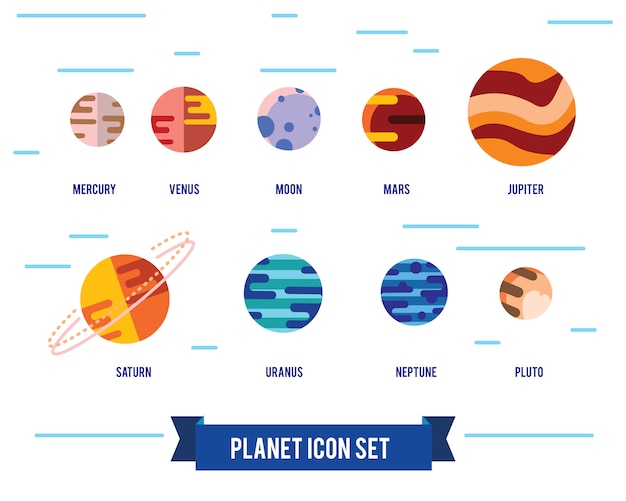

Did you know that Neptune is the eighth and farthest known planet from the Sun in our solar system?
Neptune is named after the Roman god of the sea and is often referred to as the Blue Giant.
The atmosphere of Neptune is composed mainly of hydrogen and helium, with a small percentage of methane which gives it its distinct blue color.
Neptune has the fastest winds recorded in the solar system, with speeds reaching up to 1,500 miles per hour.
The average temperature on Neptune is minus 353 degrees Fahrenheit, making it the coldest planet in our solar system.
Neptune has a very active climate, with storm systems and dark spots appearing and disappearing on its surface.
The Great Dark Spot on Neptune was a massive storm that was first observed by the Voyager 2 spacecraft in 1989 but disappeared by the time the Hubble Space Telescope observed it again in 1994.
Neptune has a very faint ring system, consisting of five main rings.
The rings of Neptune are named after famous astronomers, including Galileo, Galle, Le Verrier, Lassell, and Arago.
Neptune has 14 known moons, including Triton, which is the seventh-largest moon in the solar system.
Triton is the only large moon in the solar system that has a retrograde orbit, meaning it orbits in the opposite direction of its planet’s rotation.
Triton is also one of the coldest objects in the solar system, with surface temperatures reaching around minus 391 degrees Fahrenheit.
The discovery of Neptune was a result of mathematical predictions rather than direct observation.
Neptune’s gravity is about 17% stronger than Earth’s, meaning you would weigh more if you were standing on its surface.
The atmosphere of Neptune contains faint traces of methane, which is responsible for its blue color and strong odor.
Neptune’s magnetic field is about 27 times more powerful than Earth’s.
Neptune’s magnetic field is tilted at an angle of about 47 degrees compared to its axis of rotation.
Neptune takes about 165 Earth years to complete one orbit around the Sun.
The seasons on Neptune last for around 40 years due to its long orbital period.
Neptune is not visible to the naked eye and was the first planet discovered using mathematical calculations.
Neptune is so far away from the Sun that it receives only about 1/900th of the amount of sunlight that Earth does.
The core of Neptune is comprised of rocky material surrounded by a layer of icy compounds.
Scientists believe that the core of Neptune is about the size of Earth and contains two-thirds of its mass.
The first close-up images of Neptune were captured by the Voyager 2 spacecraft when it flew by the planet in 1989.
The name Neptune comes from the Latin word Neptunus, which means god of the sea.
Neptune’s atmosphere is known for its dynamic cloud formations and storm systems, including cyclones and anticyclones.
Neptune’s interior is under extreme pressure, which causes the gases to compress and become supercritical fluids.
The methane in Neptune’s atmosphere absorbs red light, giving the planet its distinct blue appearance.
Neptune’s blue color is often compared to that of a blueberry.
The wind patterns on Neptune are some of the most complex in the solar system, with both eastward and westward winds coexisting at different latitudes.
Neptune has been visited only by one spacecraft, Voyager 2, which provided valuable data and images during its flyby.
The Voyager 2 spacecraft discovered six new moons of Neptune during its flyby, which were later named Naiad, Thalassa, Despina, Galatea, Larissa, and Proteus.
The atmosphere of Neptune is incredibly dense, with pressures reaching up to 1000 times that of Earth’s atmosphere at sea level.
Scientists believe that beneath Neptune’s outer atmosphere, there may be a layer of hot, high-pressure water mixed with other compounds.
Despite its distance from the Sun, Neptune still emits its own heat energy due to its ongoing contraction.
Neptune’s moon Triton has a geologically active surface, with features such as nitrogen geysers and cryovolcanism.
Triton is slowly spiraling toward Neptune and is predicted to eventually be torn apart by its gravitational forces, possibly forming a new ring system.
The surface of Triton is covered in a layer of frozen nitrogen, giving it a white and pinkish color.
The large amount of methane in Neptune’s atmosphere reflects sunlight, making it the coldest planet in the solar system.
Neptune’s rings are not visible from Earth and were only discovered using occultation observations.
Neptune’s rings are made up of dust particles and ice, similar to the rings of Saturn.
Neptune has a faint and mostly featureless atmosphere, making it difficult to observe from Earth.
The Voyager 2 spacecraft discovered dark spots on Neptune, similar to Jupiter’s famous Great Red Spot.
Neptune’s magnetic field is tilted, causing it to wobble as the planet rotates.
Scientists believe that the innermost layer of Neptune’s atmosphere is composed mainly of helium, with trace amounts of hydrogen, methane, and other compounds.
Around the world, coffee enthusiasts enjoy Monin coffee concentrate since it is a multipurpose product. Conveniently combining…
The Importance of Choosing the Right Shower for Your Bathroom Renovating your bathroom can be…
Usain Bolt holds the record for the fastest 100-meter sprint in history.Bolt was named Sportsman…
Love is in the air... and it smells suspiciously like chocolate!Roses are red, violets are…
Life's a beach, take a picture and relax.Sun, sand, and salty kisses. That's what beach…
Hungary is home to the largest thermal water cave system in the world.The Rubik's Cube…